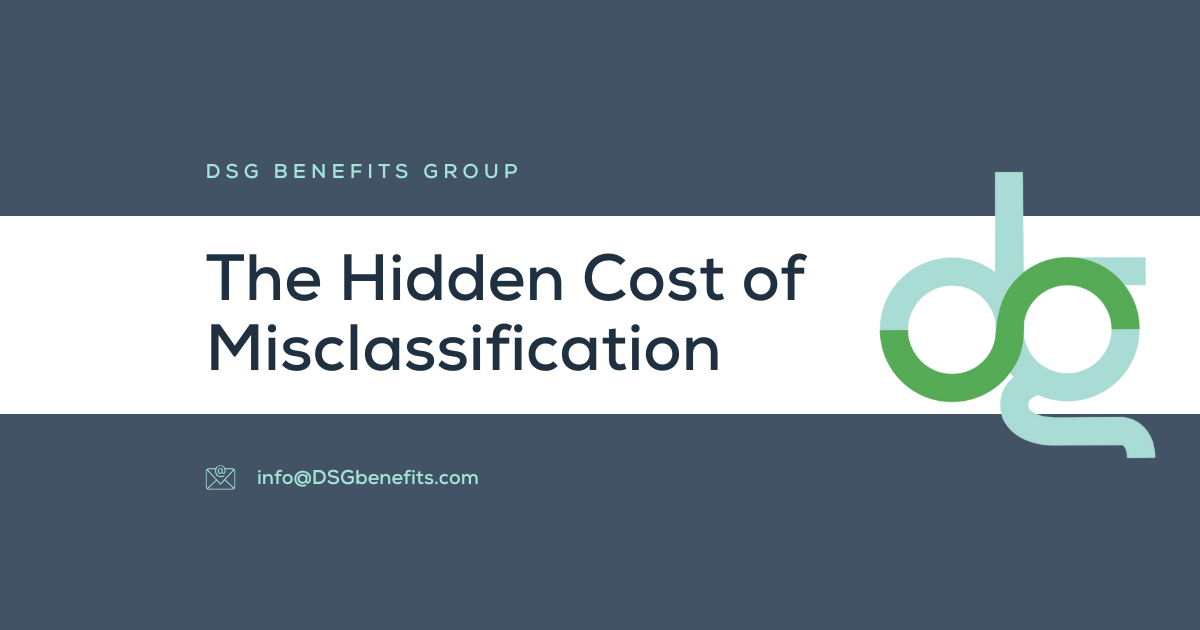When it comes to employee health insurance, many companies don’t realize how much money they’re leaving on the table due to a simple yet critical mistake: misclassification of small-group versus large-group status.
Insurance carriers classify businesses into either small-group or large-group based on the number of full-time equivalent employees (FTEs). However, this classification is not as straightforward as it seems, and misclassifications can lead to substantial financial consequences.
The Small vs. Large-Group Misconception
A small-group plan is typically for companies with fewer than 50 FTEs, while large-group plans are typically for businesses with 50 or more FTEs (varies by state). What many don’t realize is that misclassification—whether intentional or not—can have a huge impact on premiums, coverage options, and overall cost. Large-group plans usually offer more flexibility, whereas small-group plans might seem more restrictive, yet they can be more affordable if the company qualifies.
Here’s the catch: some insurance carriers may incorrectly classify a business, and the company may never know it’s paying more than necessary.
The Financial Impact
Misclassifications can cost companies tens of thousands of dollars annually. We’ve seen businesses who, after a careful audit and correction of their classification, saved up to six figures in premiums.
That’s money that could be reinvested into your business, supporting growth, employee benefits, or operational improvements.
Why Does This Happen?
There are several reasons for misclassification, but most often, it boils down to lack of understanding of how FTEs are calculated or errors in the reporting process. Sometimes, businesses undergo changes that should trigger a reclassification—like a reduction in workforce—but the carrier or employer fails to adjust accordingly.
How to Ensure Accurate Classification
- Review Employee Count: Regularly review your FTE numbers to ensure you’re being classified correctly. It’s not just about full-time employees—part-timers, seasonal workers, and contractors can affect your FTE count.
- Conduct an Insurance Audit: Engage with an expert to audit your insurance classifications and ensure they align with your workforce size. A periodic review can uncover any discrepancies that could be costing you money.
- Negotiate with Carriers: If you discover a misclassification, work with your carrier to correct it. Don’t be afraid to challenge their assessment if it doesn’t reflect your actual situation.
Bottom Line
Accurate classification with your insurance carrier isn’t just a bureaucratic detail—it’s a major factor in your overall costs. We’ve helped businesses save thousands, even tens of thousands, simply by ensuring they were correctly classified. If you haven’t reviewed your employee health plan classification recently, now’s the time. The savings could be substantial.
It pays to know where you stand.

